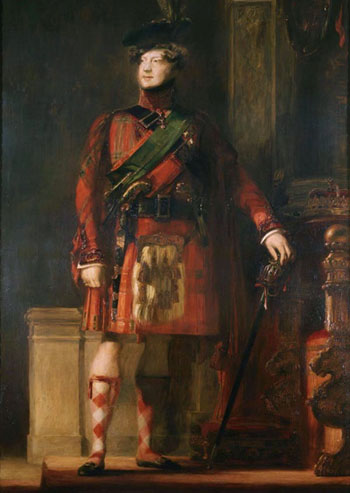By Simon Duncan
Guest Writer
 Marriage used to be an essential gateway into adult life, allowing legitimate sexual intimacy, parenting and homemaking. But these days, most couples live together before getting married or eschew the tradition altogether, even when they have children. Marriage rates have steadily declined as cohabitation increases, yet legislation affording rights to unmarried couples has not kept up. Many couples wrongly believe their relationship has the same or similar status in the eyes of the law as married couples.
Marriage used to be an essential gateway into adult life, allowing legitimate sexual intimacy, parenting and homemaking. But these days, most couples live together before getting married or eschew the tradition altogether, even when they have children. Marriage rates have steadily declined as cohabitation increases, yet legislation affording rights to unmarried couples has not kept up. Many couples wrongly believe their relationship has the same or similar status in the eyes of the law as married couples.
In 2018, almost half of adults in England and Wales (46%) believed that unmarried cohabiting couples have such a “common law marriage”. There is no such thing in Britain, and yet this myth is stubbornly persistent; with proportions of 51% in 2006 and 56% in 2000. Even the government’s Living Together Campaign, set up in 2004 to “challenge the myths”, and the warnings of concerned professionals have hardly made a dent.
But rather than just a story about legal ignorance, common law marriage is an invented tradition that helped transform cohabitation from a deviant rarity to normal practice.
Changing times
Belief in common law marriage is actually quite recent. In her book on the changing legal regulation of cohabitation, legal historian Rebecca Probert found no popular use or understanding of the term before the 1970s. In the space of a decade or so what was once an obscure legal term occasionally applied to marriages overseas became transformed into a widespread social myth about cohabitation in Britain.
Until the 1970s, unmarried cohabitation was rare, deviant and stigmatised. Charities first borrowed the term in the middle of that decade to distinguish between more “deserving” cohabitants (those with children or in long-term partnerships) from those in more temporary relationships. The popular press soon generalised the term for all cohabitants and also found lurid copy in connecting “common law” wives and husbands to crime, drugs, seediness, and even communism.
But even though there were articles at the time that pointed out that common law marriage did not exist, they were ignored by many and were not enough to counter the false accounts. Why? A clue is given by the parallel transformation of cohabitation itself in Britain in the 1970s.
Invented tradition

Portrait by David Wilkie painted in 1829, of King George IV in kilt during the visit to Scotland in 1822. Photo credit: Wikipedia Commons.
In the previous decade, many of those who were already married still preferred to commit the crime of bigamy rather than simply live with a new partner. And right into the 1970s, magazines like Cosmopolitan advised their young women readers to pretend to be married rather than admit to the shame of cohabitation. But by 2000, cohabitation had been transformed into an unremarkable mass practice. It seems the invention of the myth of common law marriage accompanied the transformation of cohabiting in practice.
Common law marriage is called a myth because only some people believe it, and because it is regularly challenged by authoritative figures. But other myths are more successful and, while also invented, become generally accepted as real historical traditions. A classic case is the Highland tradition, dissected by the historian Hugh Trevor-Roper.
The paraphernalia we associate with the Highlands – kilts, bagpipes, tartans, Highland games – were largely made up by a collection of 18th and 19th-century fantasists, forgers and romantics. The epic poems of a “Gaelic Homer” were downright fakes, while a savvy Lancashire textile manufacturer made up the system of specific clan tartans. Suitably embellished by the Scottish novelist and poet, Walter Scott, this invented tradition helped preserve Scotland’s national identity.
The royal family jumped on the bandwagon, too. George IV’s famous 1822 visit to Scotland, orchestrated by Scott, included tartan pageantry, and helped a monarchy that was seeking legitimacy to cover over its German origins.
While the existing Highland social system was destroyed, an invented one gave the victors – in particular the Scottish Lowland establishment and the Hanoverian royal family – legitimacy and identity.
Constructing false history
Our research into the changing nature of coupledom suggests common law marriage can be seen in a similar way. Its invention allowed cohabitants to take on the legitimacy of marriage. By supporting the myth that cohabitation could be just like a marriage, cohabitants no longer had to hide their identity, or even worse justify what was seen as challenging or shameful behaviour. Nor were they seen as doing anything particularly new.
In stark contrast to before the 1980s, in social gatherings, schools and hospitals throughout the land, married and unmarried couples began to be treated just the same. Seen like this, it is little wonder that many ignored authoritative information, and preferred to hold fast to the myth.
The invention of common law marriage has also been supported by a constructed history. From the 1970s onwards, an academic orthodoxy maintained that cohabitation and common law marriage were quite widespread among ordinary people in the 18th and 19th centuries, only dying out in the “marriage centric” 1950s. However, Probert’s research has shown how both claims are, at the least, massively exaggerated. This mistaken history partly emerged from selective sourcing. Digitised sources, which allow researchers to easily trace marriage records, have only recently become available.
But more than this, sketchy and speculative evidence became generalised as accepted fact. Broomstick weddings, where partners held hands and skipped over crossed broomsticks, are a striking example. Said to be widespread in rural Wales, the original source for this quotes just one man who reported hearing about it, although he had never seen it himself.
Why did academics embrace this false history? Partly the intellectual zeitgeist of the time championed the resistance of ordinary people to church and state. But this history also legitimated calls for legal reform to actually give cohabitants marriage-like rights. For these reforms, which would fundamentally change marriage law, could be presented as less of a shift – they would simply formalise pre-existing practice. In turn, this spurious history gave further credence to the “myth” of common law marriage.
While common law marriage may be a legally erroneous myth, it has also been socially meaningful and effective. But is its time now up? The introduction of civil partnerships for heterosexual couples, planned for December 2019, will give couples almost all the rights of marriage without marriage itself. Perhaps common law marriage has done its job – but maybe all too well for those assuming rights they do not have.![]()
Simon Duncan is an Emeritus Professor in Social Policy at the University of Bradford.
This article is republished from The Conversation under a Creative Commons license. Read the original article.
 Pride News Canada's Leader In African Canadian & Caribbean News, Views & Lifestyle
Pride News Canada's Leader In African Canadian & Caribbean News, Views & Lifestyle






